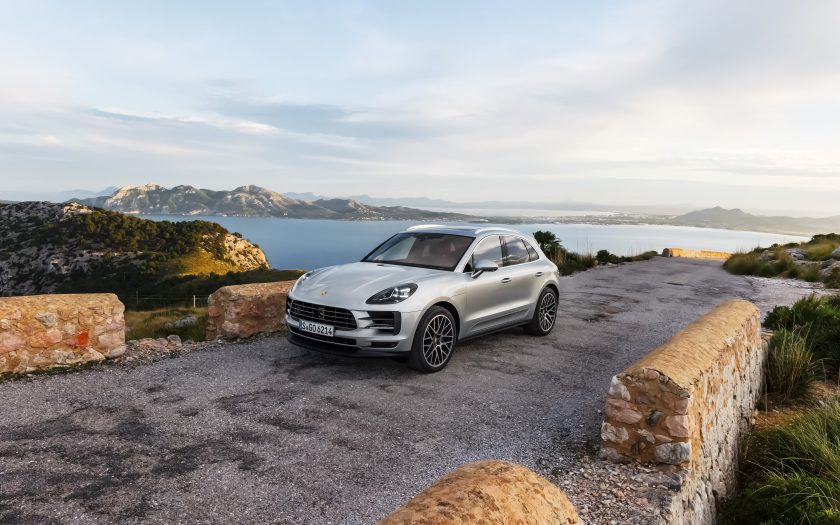Paul Murrell tests the 2019 Porsche Macan S with pricing, specs, ride and handling, safety, verdict and everything the over-50 driver needs to know.
Summary: Porsche’s popular Macan has been given an update, and the most important changes are under the skin.
2019 Porsche Macan S
Pricing: $81,400 to $142,000 (plus on road costs) S from $97,500 (up by $2000 for the S, but more standard equipment)
Warranty: 3-years, unlimited kilometres, with three-year roadside assist (still no sign of longer warranties)
Safety: not tested
Engine: 3.0-litre twin-turbocharged petrol six-cylinder
Power: 260kW @ 5400rpm (up 10kW over previous engine)
Torque: 480Nm @ 6400rpm (up 20Nm over previous engine)
Transmission: PDK automatic
Drive: all wheel drive
Body: 4696mm (L), 1923mm (W), 1624 (H)
Ground clearance: 190mm
Tyre size: 265/45 R20
Boot capacity: 500 litres to 1500 litres
Weight: 1865kg
Turning circle: 11.96m
Towing: 2000kg (braked), 700kg (unbraked)
Spare: space saver temporary
Fuel tank: 75 litres
Thirst: 8.9L/100km (9.6L/100km, Macan S, combined, 98 RON)
seniordriver consumption: 11.3/100km over 254km
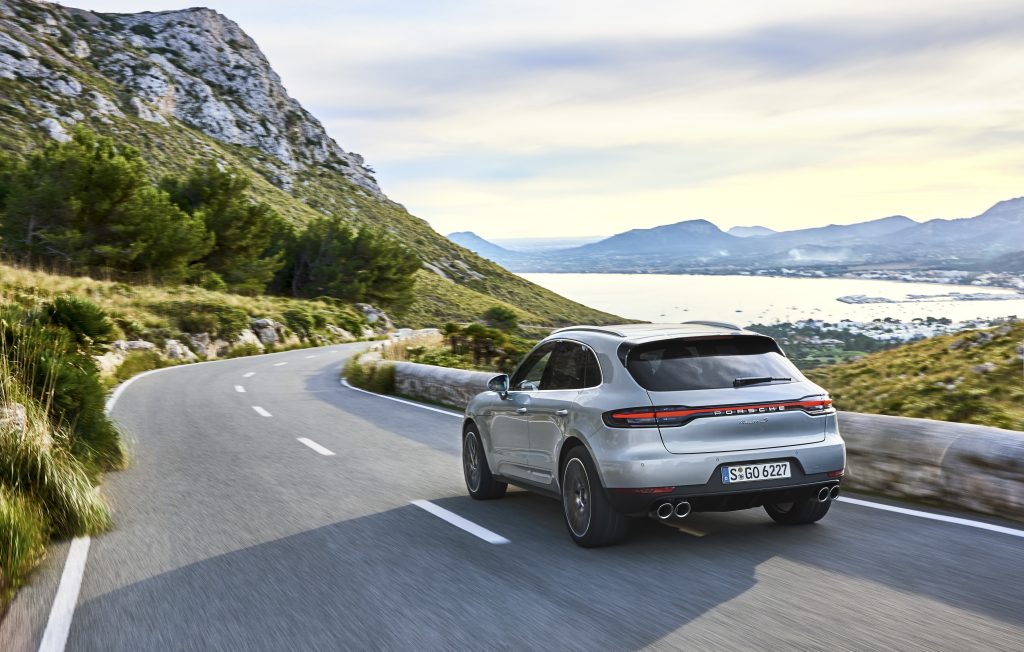
[review]
ANY VEHICLE WEARING the revered Porsche crest is expected to handle and perform, although the crest itself is a bit of a pretender, totally lacking genuine heritage – it was created in 1952 borrowing heavily from the coats of arms of the Free People’s State of Wurttemberg and Stuttgart to give the brand some credibility in the US market. It first appeared on the 356.
The Macan mid-size SUV is no exception to Porsche’s philosophy, and when it first arrived in Australia in 2014, it was a revelation for people who previously had simply accepted soggy handling and unexciting performance as part of the SUV DNA.
It quickly became hugely popular and has always had a substantial waiting list, something that continues today.
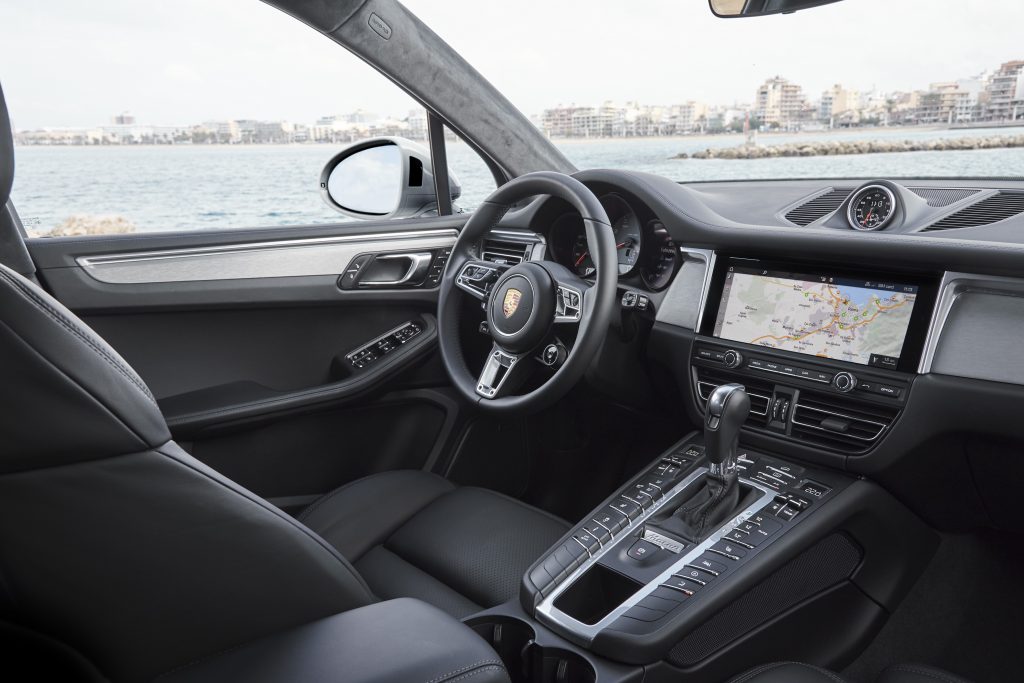
But is it a Porsche?
These days, plenty of cars aren’t quite what they appear, and the Macan is no exception. Under its very Porsche styling lie the bones of an Audi Q5. Dig a little deeper and you’ll uncover Volkswagen underpinnings, so does the Macan justify its considerable price premium over the vehicles on which it is based?
The answer, as always, isn’t straightforward.
Porsche makes no secret that it prices its products as highly as it can; in other words, as much as the market will bear. And since value for money is a subjective evaluation, the final decision comes down to the buyers.
Strong continuing demand shows that Porsche has got its sums right.
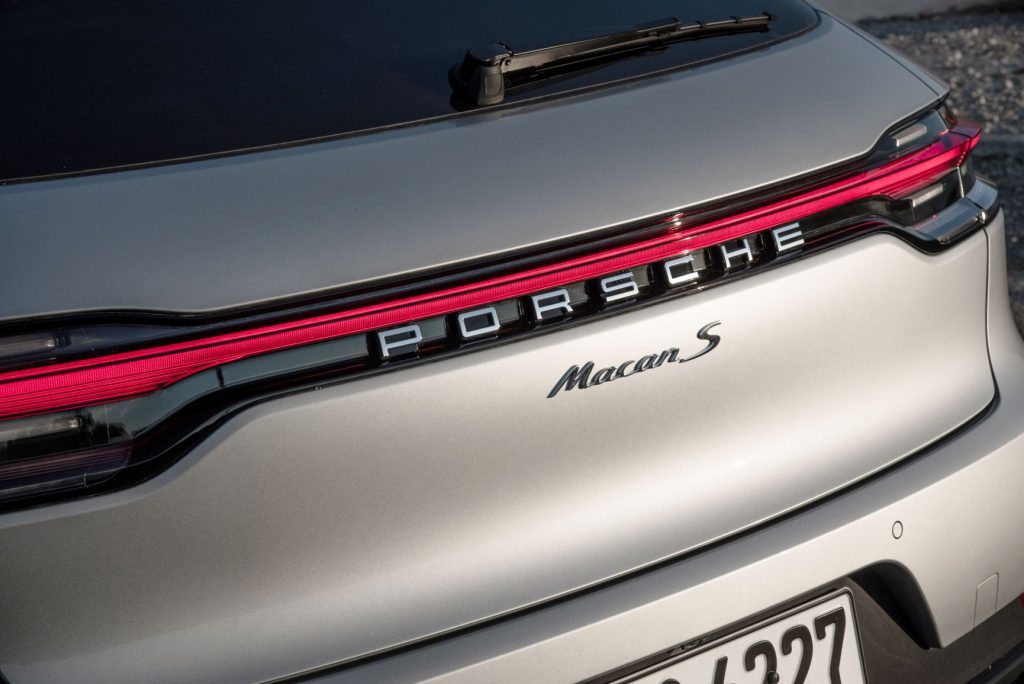
2014 was a long time ago
In motoring terms, 2014 was a long time ago, and the motor industry moves quickly. Where the Macan was once far ahead of its competitors, over the ensuing years they have started to catch up. And premium SUVs like the Mercedes-Benz GLC, Audi Q5, BMW and Range Rover, especially in their sporting versions, are challenging the Macan’s dominance.
Hence the latest facelift for the Macan, one that is technically interesting, rather than a simple cosmetic refresh.
Spot the changes
Basically, the new Macan isn’t substantially different to the previous model when it comes to styling or dimensions. But open the bonnet of the Macan S (currently the mid-spec model, and the one we are testing) and an important improvement becomes obvious: it’s the 3.0-litre twin-scroll single turbo engine, delivering lower emissions, and, thanks to its narrower width, sitting lower in the chassis for even better balance. Power rises to 260kW from the previous engine’s 250, and torque gains 20Nm to 480Nm.
Power is delivered through Porsche’s familiar seven-speed PDK dual-clutch auto which, like all of it’s dual-clutch ilk, can occasionally (but rarely) be wrong-footed, and a variable centre-clutch all-wheel drive system including off-road mode.
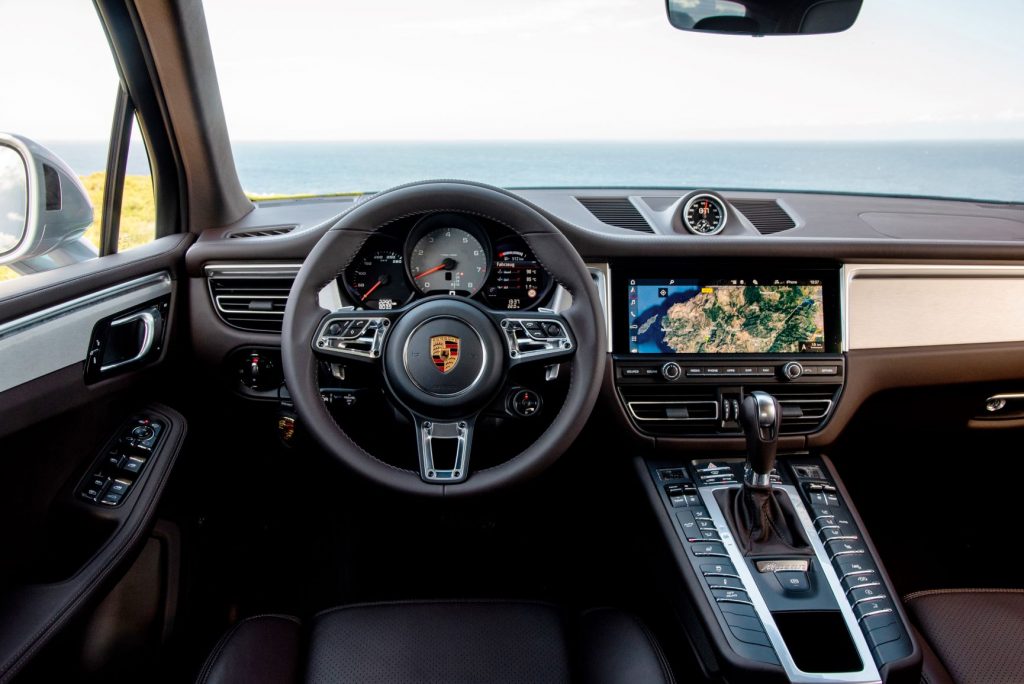
More technical improvements
While nobody would complain about the outgoing Macan characteristics, Porsche has applied changes that make it even better. Retuned anti-roll bars tighten things up, aided by a weight saving of 1.5kg per corner by using aluminium spring forks. According to Porsche, a new engine mount reduces engine roll and improved turn-in, and the standard active dampers are only bettered by the optional height-adjustable air suspension and torque vectoring.
Standard wheels are 20-inches but also available are 21-inch wheels shod with 295/35 rear tyres. We’d expect such large wheels and low-profile rubber to have an effect on ride comfort, but not having experienced both sizes, we can only speculate.
Upgrades inside as well
The most immediate change inside is the touch screen that has grown substantially from 7.2-inches to 10.9.
The busy, but very stylish, ascending centre console remains, and continues to be a Porsche signature. It doesn’t take long to acquaint yourself and because of its design, makes the interior very cockpit-like. It also has the advantage of making many functions readily available to the passenger. There’s sat nav, an improved voice-recognition system, Apple CarPlay (but no Android Auto) plus access to multiple apps through the Porsche Connect System and a very good AM/FM/DAB+ radio (although like all of its kind, digital radio quickly drops out once you move outside urban areas). It takes a while to get used to the operations of the various levers behind the steering wheel (if you include the gear change paddles, there are five of them!) but the three-dial instrument cluster is pure Porsche. The air vents have moved to below the touchscreen.
Seats exhibit the comfort you’d expect, plus some reassuring support. The ideal driving position is assured by the 14-way adjustment. Rear seat passengers aren’t quite so well catered for – it’s a little claustrophobic back there – but the trade-off is a useful 500 litres of luggage space in the boot, rising to 1500 litres when you drop the 40:20:40 split fold rear seats.
However, despite the fairly hefty price, much is offered at additional cost, including contrasting leather for $10,790, the Sport Chrono package for $2690, sports exhaust for $5390, the excellent air suspension for $2990 and LED headlights including dynamic function at $3880. Of more concern is the omission of autonomous emergency braking unless you fork out an additional $2410 (although it is bundled with active cruise control).
According to Porsche, despite a $2000 price jump for the Macan S over the outgoing model, this is offset by the inclusion of $7400 worth of additional equipment.
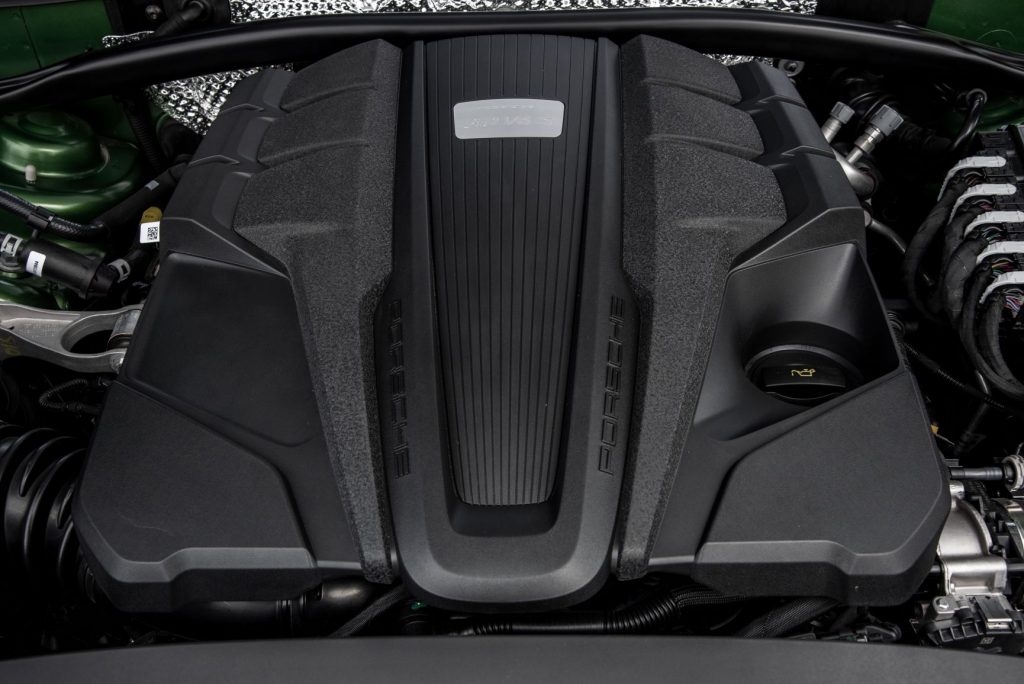
Safety is a priority
Other than the omission of AEB, the Macan caters for safety very well. Park assist, lane departure warning, parking sensors at all four corners, rear-view camera and tyre pressure monitoring are all included, as are two ISOfix fixtures in the rear and three top tether mounting points.
The spare is, unsurprisingly, an inflatable emergency spare.
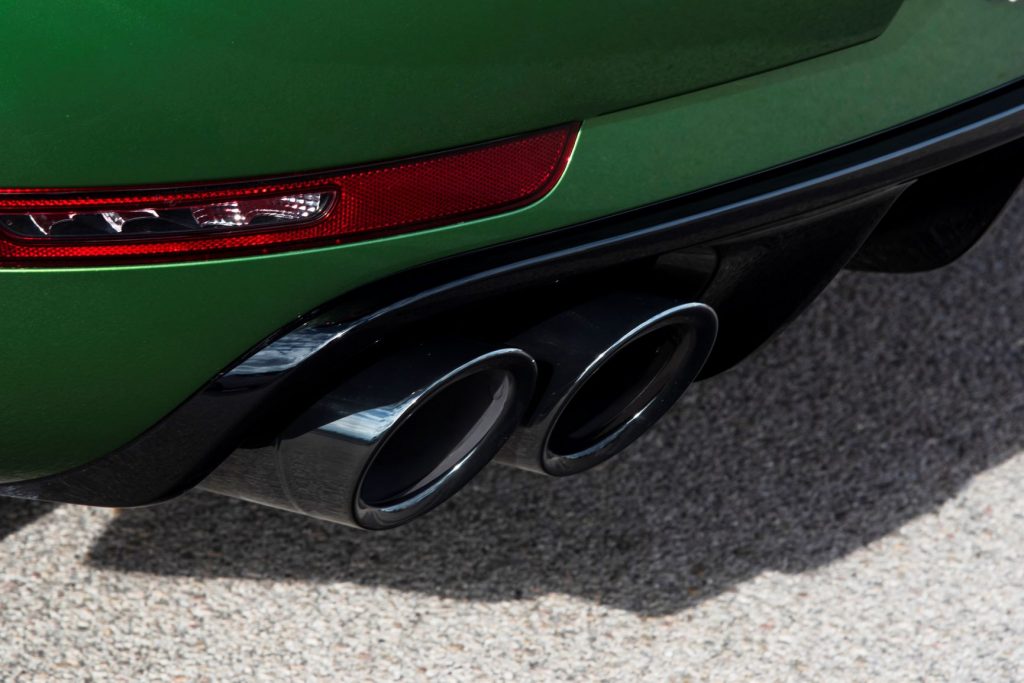
A better driving experience
Since the Macan’s big point of difference is that it’s an SUV that drives like a Porsche, it’s good to see that it remains great fun to drive hard, and quite relaxing when you just want to pootle around.
It sits flat, as you’d expect from a Porsche and despatches corners and bends with disdain, although you never forget the 1865kg that you’re piloting around bends.
Steering input is finely weighted and there’s plenty of feedback so you know what’s happening under the wheels. Braking has been fine tuned and is lighter than before – the Macan stops with brilliant confidence, from almost any speed.
The PDK auto makes quick changes that get even quicker in Sport+ mode (but this mode is not very comfortable for everyday motoring). There’s absolutely no reason to change gears manually, other than for the sheer pleasure of doing so.
We were a little annoyed by the Sport mode (which we preferred for most occasions) and the Sport+ mode (that we activated just to compare) would default to Normal mode after the engine was shut down, necessitating resetting to our chosen mode every time we started the car. It’s a small thing (and, apparently, necessary to achieve the best fuel consumption figures under the testing regimen).
We also wonder why the Porsche only displays vehicle trip data (speed, fuel consumption etc.) for the current trip, rather than a cumulative figure – we like to record that data from refuel to refuel. There may be a way of displaying different data, but we didn’t find it.
And one final niggle was that a quick flick of the cruise control wand could often lead to an inadvertent change from cruise control to speed limiter – the button is on the underside of the lever.
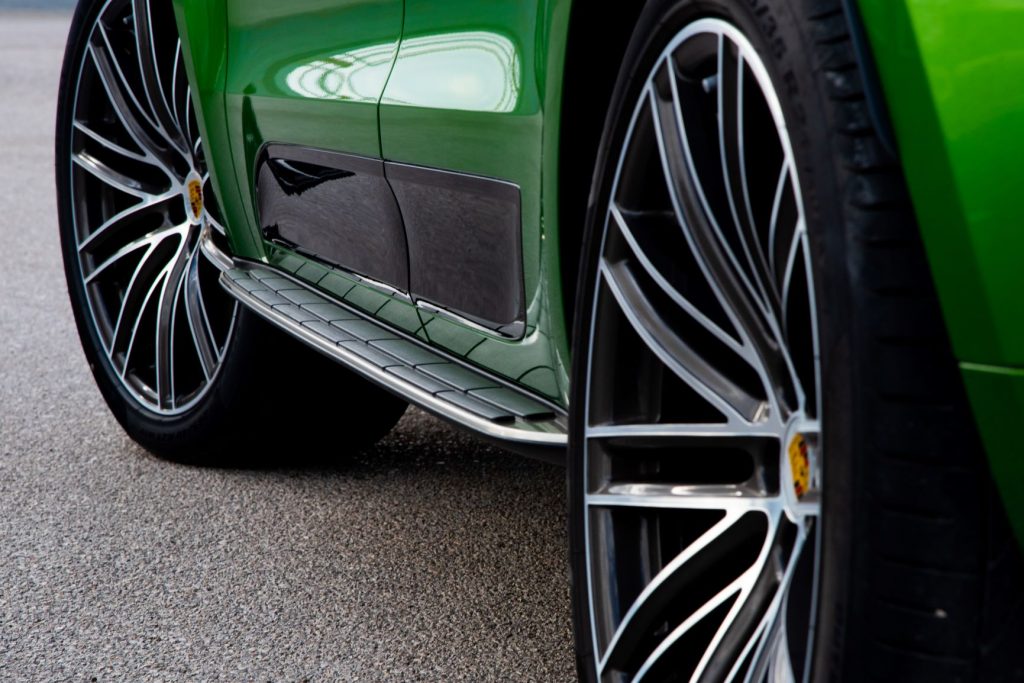
Warranty whinge
Like other luxury car brands, Porsche has resisted the move to longer warranties. The Macan S is covered by a three-year warranty which, by current standards, looks parsimonious. Servicing needs to be carried out yearly, or at 15,000km intervals and this needs to be factored into your running costs, because Porsche servicing doesn’t come cheap.
Summary
The latest changes to the Macan, and especially the Macan S, will ensure that it continues to sell strongly and deliver the full fat driving experience expected of a Porsche.
Apart from the price, the only drawback is how long you’ll have to wait for delivery. Fortunately, the wait is well worth it.
